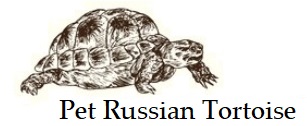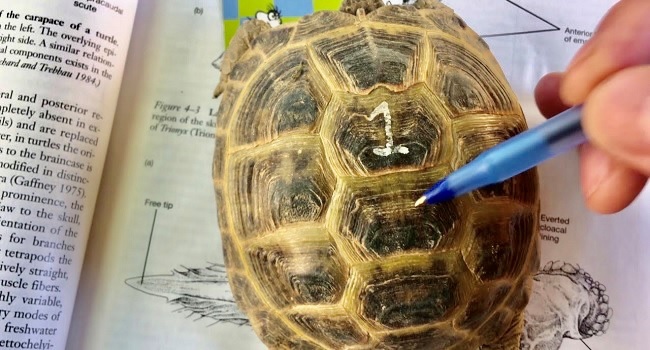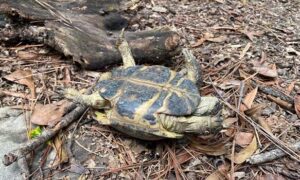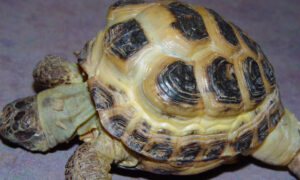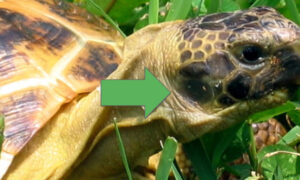Tortoises are very similar to most other vertebrates (animals with a backbone). You will find some differences in a Russian tortoise anatomy when compared to other animals, however for the most part, a tortoise anatomy functions similarly to other animals.
Tortoise Shell
A tortoise shell is made of two halves fused together by a “bridge.” The top of the shell is the carapace, and the bottom of the tortoise shell is the plastron.
The shell itself is made of small bones covered by plates of keratin, called scutes.
On the carapace, Russian tortoises have 5 central scutes (or vertebral scutes), 8 costal scutes, 22 marginal scutes, 1 supra caudal scute and 1 nuchal scute. On the plastron, Russian tortoises have 2 each of the center scutes.
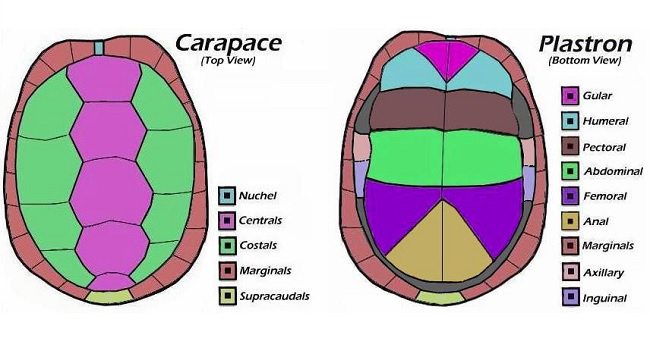
Tortoise Skeleton
Russian tortoises many different bones. The shell is the most obvious and visible bone, however the skeletal system of a Russian tortoise doesn’t stop there.
- Skull – the skull and lower mandable are made of many small bones that are fused together.
- Cervical vertebrae (neck bones)
- Dorsal vertebrae – bones fused to the carapace
- Leg bones
- Wrist, ankle, feet and toe bones
- Scapula and coracoid bones of the pectoral girdle
Tortoises do not have teeth, however their jaw is very strong and forms a beak that shreds and grinds food.
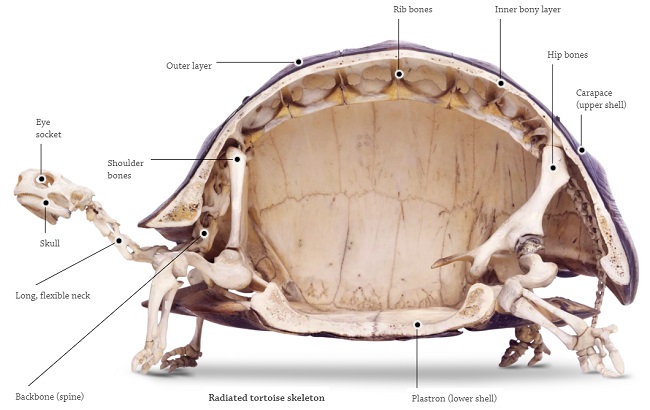
Muscular System of Tortoises
Tortoises have a different muscular system than most other vertebrates. They do not have the muscles that are typically used to twist a backbone. However, tortoises have well-developed muscles in their necks that allow them to retract into their shells.
Tortoises also have very strong and well-developed leg and tail muscles, as well as powerful jaw muscles.
Digestive System of Tortoises
Tortoises have all the same organs as most other vertebrates. However, being herbivores, Russian tortoises have longer intestines to support the breakdown and fermentation of the foods they eat using digestive microbiomes.
A tortoise’s digestive tract extract the nutrients and moisture from foods. The bladder then stores the extracted moisture. Any waste is passed as it normally would in most vertebrates.
Tortoise poop often looks dried because the body sucks out and retains the nutrients and moisture, which helps maintain water content during harsh weather and extreme environments.
Tortoises do not excrete urine. Instead, they only excretes urates, which look like a pasty, white toothpaste.
Tortoise Respiratory System
Tortoises contain more CO2 in their blood than some vertebrates, allowing them to inhale less often. This is actually a part of a tortoise’s defense mechanism.
The only want that tortoises can suck into their shell is to empty their lungs. The higher levels of CO2 in the blood means the tortoise can stay retracted for some time without having to take a breath.
Tortoise Circulatory System
Tortoises are cold blooded, which means their bodies do not thermoregulate itself. Tortoises, like most reptiles, require an outside source of heat to warm up, whether that be the sun or a heat bulb. This requires a large “pocket” where blood can pool underneath the carapace. The blood sits under the carapace to warm before circulating through the body.
